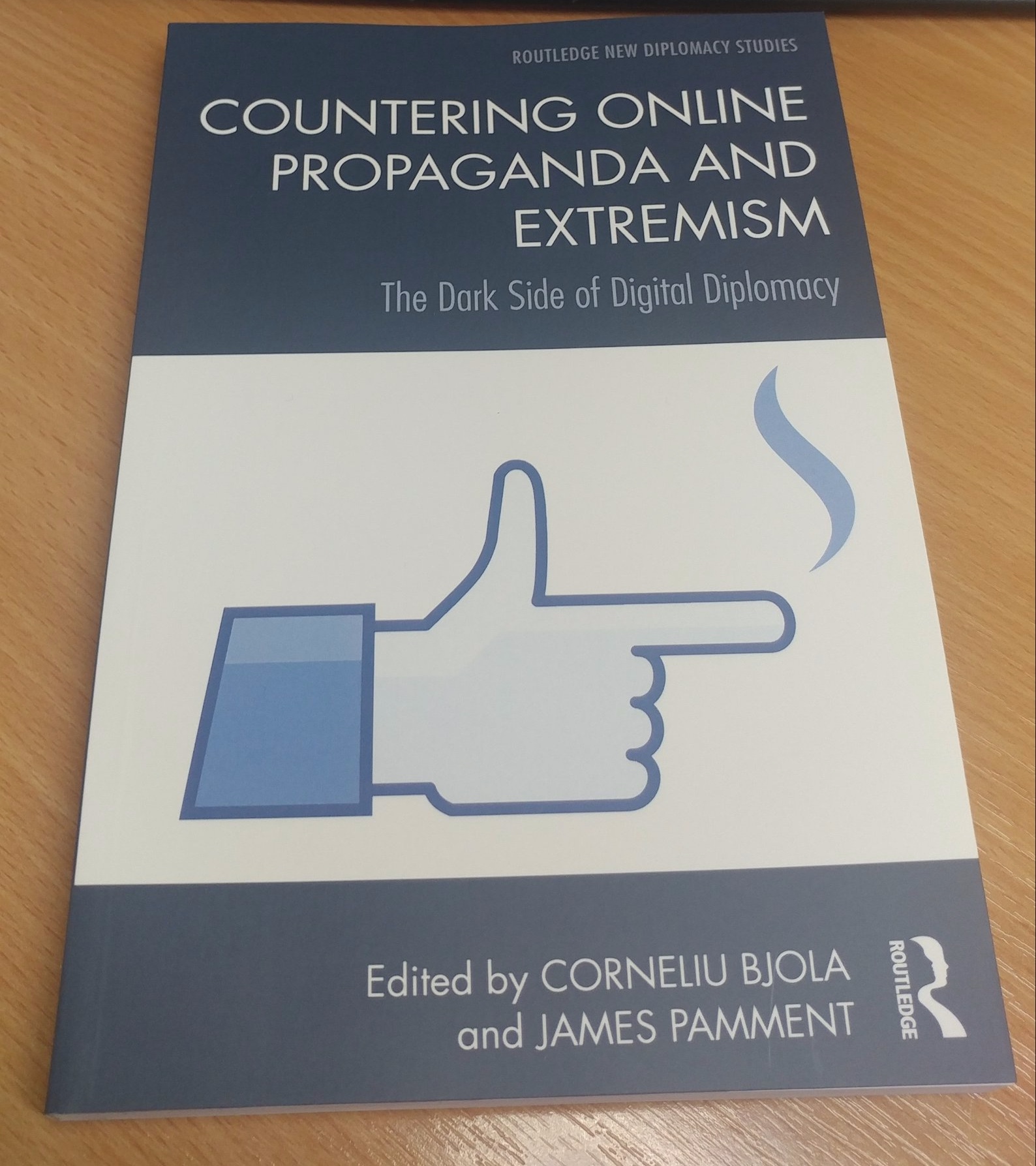NewPolCom’s Akil Awan and Ben O’Loughlin, with co-author Alister Miskimmon, have published a new analysis of the strategic narratives of Islamic State in the new book, Countering Online Propaganda and Extremism, edited by Corneliu Bjola and James Pamment. The book is available to order here.
In their article, entitled ‘The battle for the battle of the narratives: sidestepping the double fetish of digital and CVE’, the authors conclude that to understand countering violent extremism as a digital task comes at a cost:
…the ‘battle of the narratives’ becomes conceptualised and practiced as the quantitative online dominance of ‘our’ content over ‘theirs’. Rather than admitting how intractably difficult persuasion is, and rather than responding to the real-world concerns of those persuadable by radical narratives – political disenfranchisement, socio-economic marginalisation, personal identity crises and xenophobia – the mass takedown of pro-IS accounts on Twitter in 2015 is instead considered a mark of progress. It is easier to simply stopping information from IS reaching individuals in the name of counter-radicalisation rather than exploring why the narrative of IS might be attractive and even persuasive. The enemy is extremism and extremism must be stopped, not the causes of its appeal.
Countering IS communication narratives cannot refute lived experience, particularly when that lived experience resonates with the narrative. Fighting the digital battle can be a small part of fighting the war, and an even smaller part of the politics of ensuring coherent and secure identities for all citizens as well as the prospect of a good life. As potent as the narratives of violent extremists may be, they are not, in and of themselves, sufficient to account for radicalisation as a phenomenon, particularly amongst young Muslims in the West. Narratives constitute only one part in the complex array of elements that intersect to ultimately manifest as a move towards violent extremism.
Today, IS is teetering on the brink of its demise, and Western governments have evinced relief that its reach over potential audiences has been drastically diminished. However, our analysis warns that unless these real-world concerns are taken seriously and addressed holistically, these very same issues will no doubt be taken up and mobilised towards the messaging of whichever extremist group inevitably emerges next.
Thank you to Bjola and Pamment for organising such an exciting new volume.

